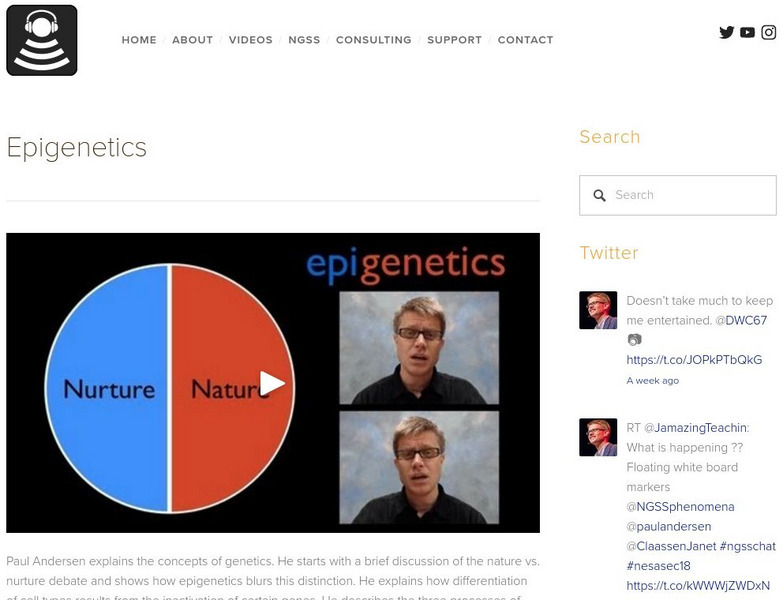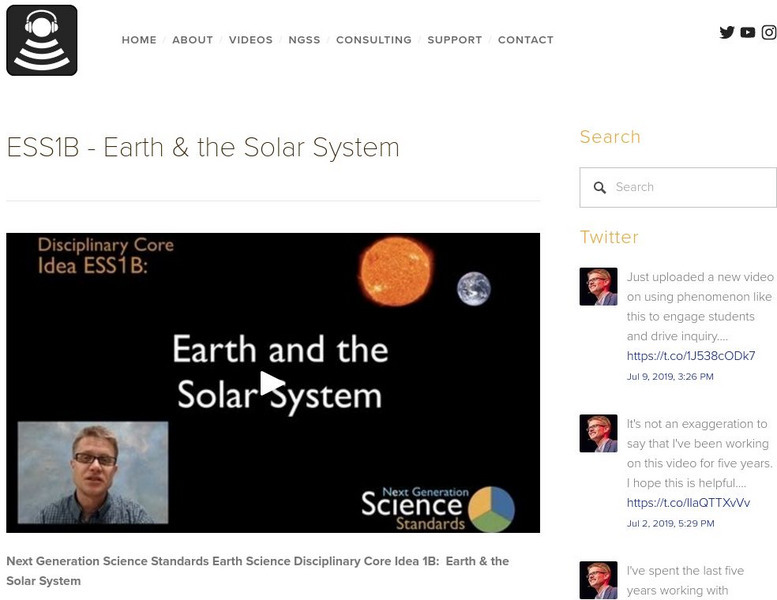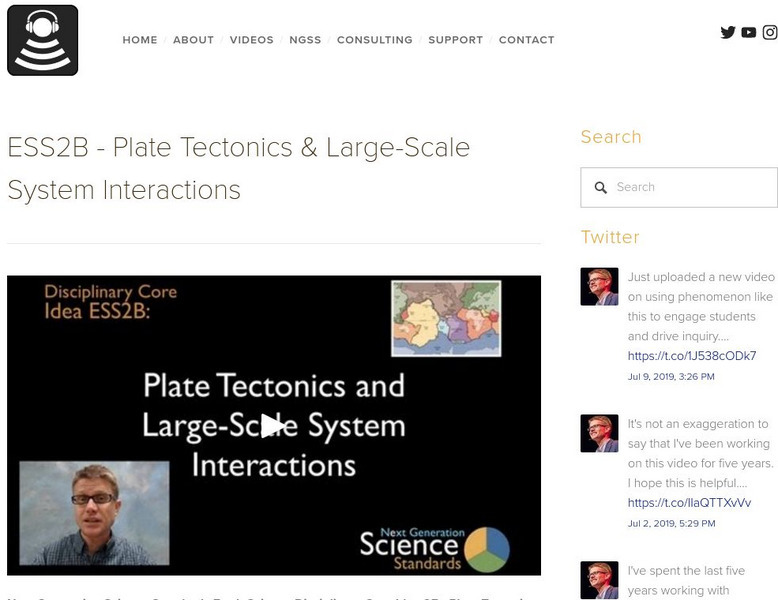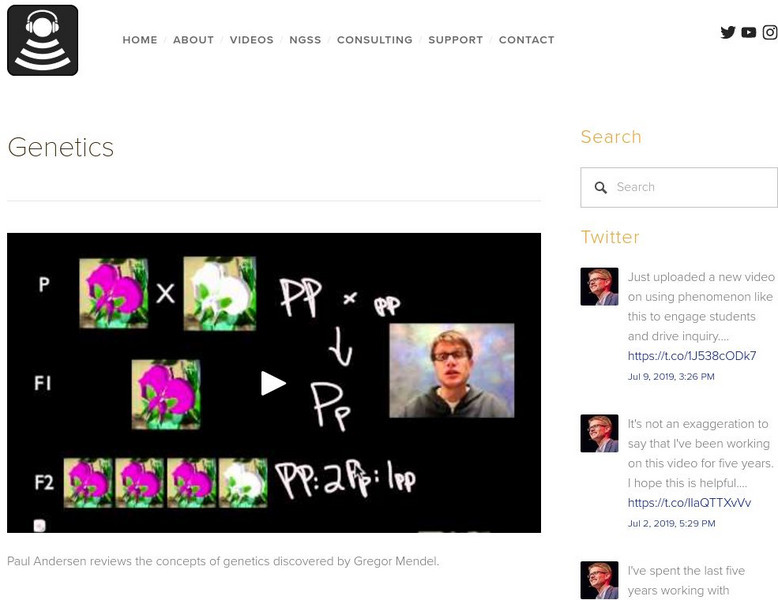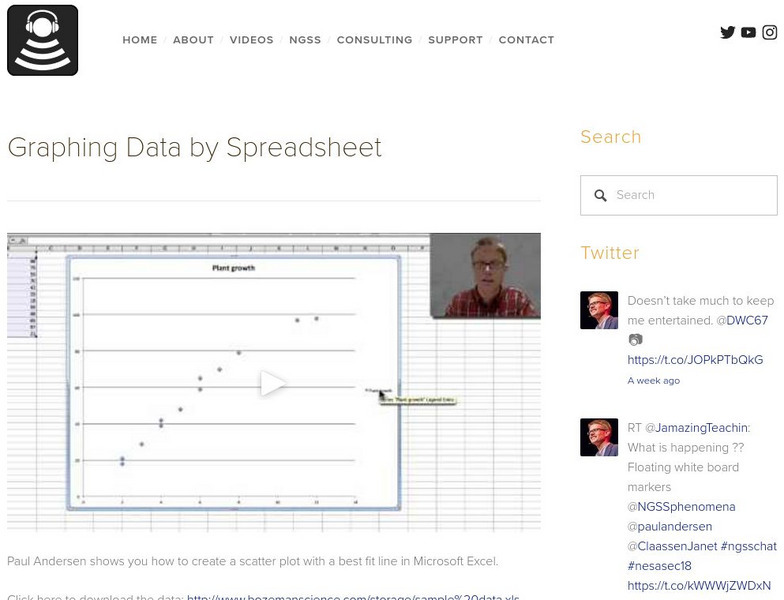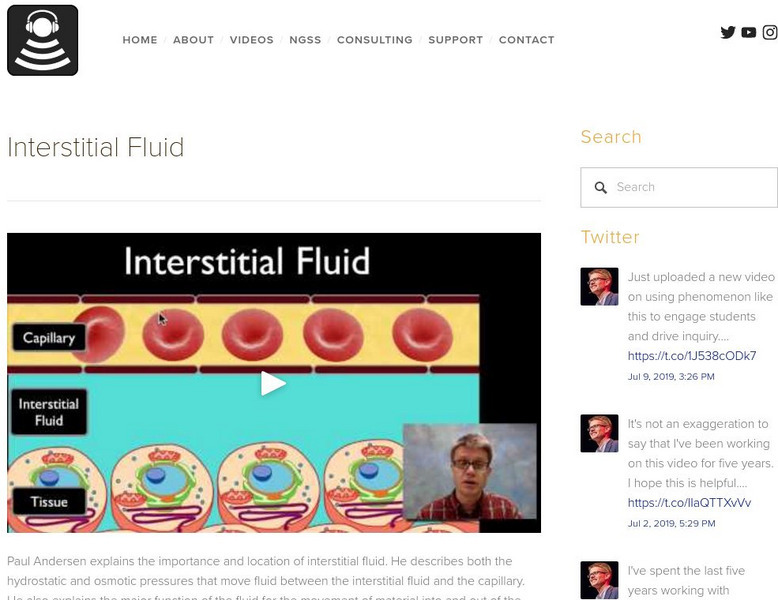Hi, what do you want to do?
Bozeman Science
Bozeman Science: Energy, Work & Power
Mr. Andersen defines the terms energy, work, and power. He also uses a simple example to calculate both work and power. [3:34]
Bozeman Science
Bozeman Science: Engaging in Argument From Evidence
Paul Andersen explains the importance of argumentation in improving both understanding and design. This video begins with a discussion of the heliocentric and geocentric model of the Universe that eventually lead to the Copernican...
Bozeman Science
Bozeman Science: Epigenetics
Paul Andersen explains the concepts of genetics. He starts with a brief discussion of the nature vs. nurture debate and shows how epigenetics blurs this distinction. He explains how differentiation of cell types results from the...
Bozeman Science
Bozeman Science: The Universe & Its Stars
Paul Andersen describes our place on the Earth in the Solar System within the Milky Way Galaxy in the Universe. The make-up and origins of the Universe are included along with stellar evolution. A teaching progression K-12 is also included.
Bozeman Science
Bozeman Science: Earth & the Solar System
In this video, Paul Andersen explains the parts of the Solar System; including the planets, dwarf planets, moons and asteroids. He explains how everything orbits around the Sun and how a proper understanding of this heliocentric model...
Bozeman Science
Bozeman Science: The History of Planet Earth
In this video, Paul Andersen explains in more detail the history of the Earth. He shows how the history of the Earth is written in the rocks that are built up over time. Fossils allow us to compare different rock layers relative to one...
Bozeman Science
Bozeman Science: Plate Tectonics & Large Scale System Interactions
In this video, Paul Andersen explains how plate tectonics explains the large-scale system interactions on our planet. Large plates float on the mantle and interact to form the major landforms on the planet. Evidence for plate tectonics...
Bozeman Science
Bozeman Science: The Role of Water in Earth's Surface Processes
In this video, Paul Andersen explains the vital role that water plays in the processes on the Earth's surface. Water has several unique properties including high heat capacity, transparency, polarity and the ability to change the...
Bozeman Science
Bozeman Science: Natural Resources
In this video, Paul Andersen explains how the resources required for survival come from the Earth. The resources are not evenly distributed on the planet and neither are the humans. According to the NGSS we need to limit the use of...
Bozeman Science
Bozeman Science: Natural Hazards
In this video, Paul Andersen explains how natural disasters (like earthquakes, tsunamis, volcanoes and flooding) have affected and will continue to affect humans on the planet. Many of the natural hazards (like volcanoes and storms) can...
Bozeman Science
Bozeman Science: Global Climate Change
In this video, Paul Andersen explains how the global climate is changing as a result of natural phenomenon and human actions. Changes in the solar radiation due to variations in the Earth's tilt and orbit have caused the ice ages....
Bozeman Science
Bozeman Science: Defining & Delimiting an Engineering Problem
In this video, Paul Andersen explains the first step in the design process, defining and delimiting the engineering problem. Design requires a clear definition of the problem and this is done by addressing both the constraints and...
Bozeman Science
Bozeman Science: Exponential Growth
Paul Andersen explains how populations experience exponential. He begins by address the major players; N (population size) and r (growth rate). He models population growth in rabbits through four generations. He then shows you how to use...
Bozeman Science
Bozeman Science: Factor Label Method
Mr. Andersen shows you how to use the factor label method to solve complex conversions.
Bozeman Science
Bozeman Science: Fight or Flight Response
Paul Andersen explains how epinephrine is responsible for changes in chemistry of our body associated with the fight or flight response. Epinephrine released by the adrenal medulla are received by a number of organs associated with the...
Bozeman Science
Bozeman Science: Free Body Diagrams
Mr. Andersen shows you how to draw free body diagrams of various objects. The major forces (like gravity, normal, tension, friction, air resistance, etc.) are discussed and then applied to various problems.
Bozeman Science
Bozeman Science: Fungi
Paul Andersen surveys the Kingdom Fungi. He starts with a brief description of the fungi phylogeny. He describes some of the major characteristics of fungi; heterotrophy, cell walls of chitin, hyphae, sessile. He describes the...
Bozeman Science
Bozeman Science: Genetics
Paul Andersen reviews the concepts discovered by Gregor Mendel.
Bozeman Science
Bozeman Science: Graphing Data by Hand
Paul Andersen shows you how to graph data by hand. He explains the required elements of a scatter plot with a best fit line. He shows you how to properly scale and label the axes.
Bozeman Science
Bozeman Science: Graphing Data by Spreadsheet
Paul Andersen shows you how to create a scatter plot with a best fit line in Microsoft Excel. You can go here to download the data: http://www.bozemanscience.com/storage/sample%20data.xls
Bozeman Science
Bozeman Science: Hardy Weinberg Equation
In this video, Paul Andersen explains the elements in the Hardy-Weinberg equation; including the allele frequency and phenotype frequency. He begins with a brief explanation of phenotypes and genotypes. A sample problem is worked out and...
Bozeman Science
Bozeman Science: Homeostatic Loops
Paul Andersen describes four important homeostatic loops in biology. He begins with a brief description of the elements of a homeostatic loop. He then describes how the hypothalamus helps us maintain a stable internal body temperature....
Bozeman Science
Bozeman Science: Interstitial Fluid
Paul Andersen explains the importance and location of interstitial fluid. He describes both the hydrostatic and osmotic pressures that move fluid between the interstitial fluid and the capillary. He also explains the major function of...
Bozeman Science
Bozeman Science: Light
Mr. Andersen describes visible light while discussing the electromagnetic spectrum. A simple description of the eye, optical illusions and lights are also included.







